While the HUAWEI Mate đôi mươi Pro is a great camera smartphone, we were expecting more. Some of you might even prefer going with the older HUAWEI P20 Pro, instead!
While the HUAWEI Mate đôi mươi Pro is a great camera smartphone, we were expecting more. Some of you might even prefer going with the older HUAWEI P20 Pro, instead!
This is the one you’ve been waiting for. Today we are taking a look at the HUAWEI Mate 20 Pro’s camera performance. Is it all it’s cracked up to lớn be?
Don’t miss:
HUAWEI has built quite a reputation in smartphone photography, so its latest and greatest entered the market with high expectations. Its triple-camera array, Leica lenses, high-resolution sensors, & wide feature set certainly put it out to lớn be among the best, at least on paper. We are here khổng lồ find out if the amazing spec sheet translates lớn equally stunning shots.
Bạn đang xem: Huawei mate 20 pro: camera review
I took it out for a spin across continents, taking into tài khoản different settings, scenarios, lighting situations, moods, và environments. Here’s what I found.
Photos have been resized for quicker loading times, but that is the only editing these images have undergone. If you want to px peep & analyze the full resolution photos, we have put them in a Google Drive thư mục for you.
Main cameras
Wide angle: 40MP, f/1.8Ultra wide angle: 20MP, f/2.2Telephoto: 8MP, f/2.4Autofocus: laser focus, phase focus, contrast focus
Image stabilization: AIS (HUAWEI AI Image Stabilization)Flash: Dual LEDVideo: 4K at 30fps, FHD+ at 30fps, FHD at 60fps, 720p at 30fps
Front camera24MP, f/2.0Support 3d Depth Sensing Camera
Video: FHD+ at 30fps, FHD at 30fps, 720p at 30fps
Fans of HUAWEI smartphones will feel right at trang chủ with the HUAWEI Mate trăng tròn Pro. It uses the same interface as the P20, P20 Pro, & other popular handsets from the Chinese manufacturer.
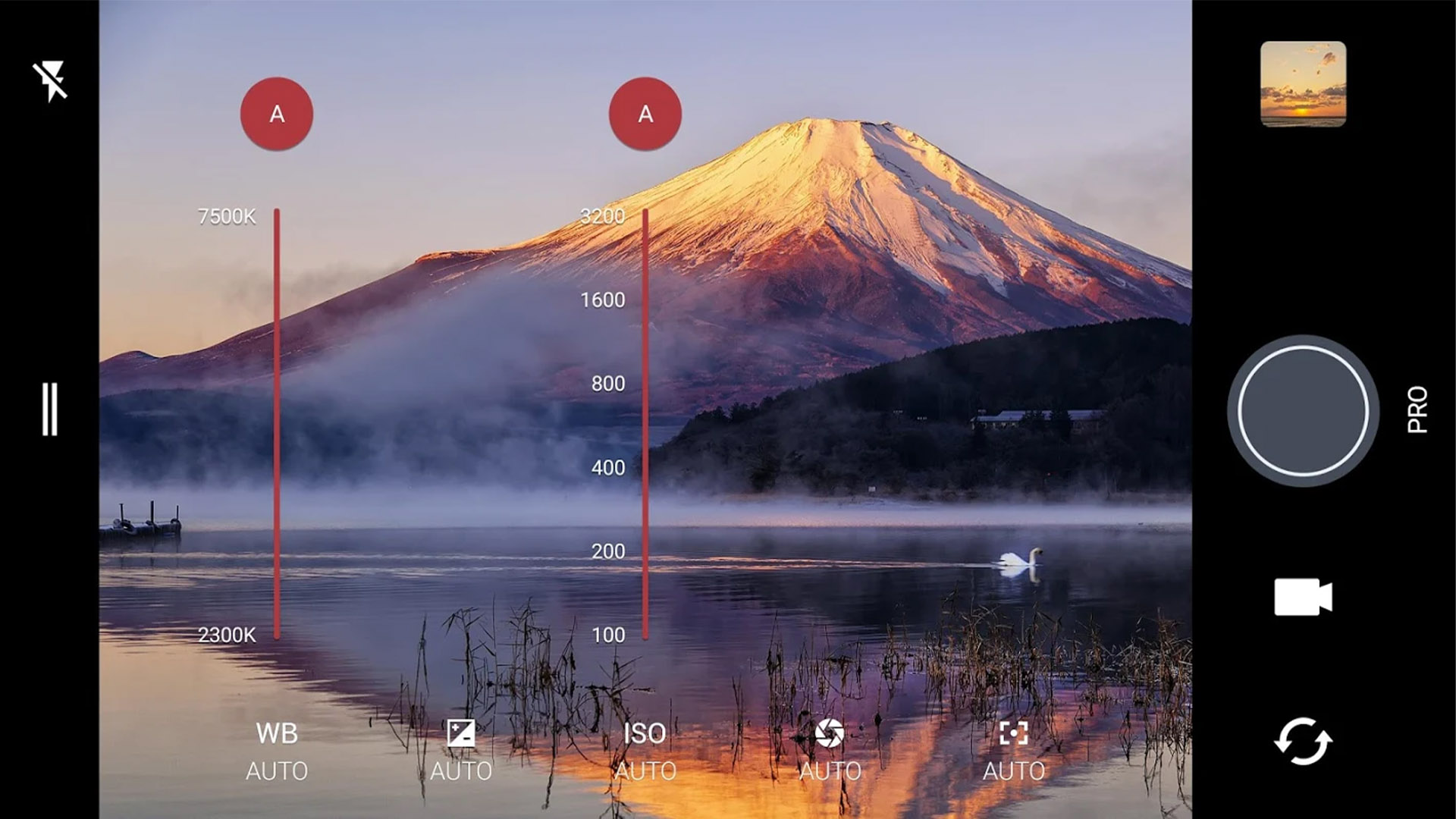
I happen to like the app for its abundant features and ease of use. Unlike camera applications from other manufacturers, everything is pretty straightforward here. Aperture, Night, Portrait, Photo, Video, and Pro mode sit clearly between the viewfinder and the shutter button. Selecting the “More” option brings up advanced features lượt thích Watermark, Time-lapse, AR lens, Slow-mo, Document scanning, HDR, Panorama, and even Underwater (which requires a special case).
It’s all there; no feature is hiding in the settings thực đơn or using weird secondary buttons. The only feature HUAWEI put in an odd location is the Hi
Vision mode, which can scan QR codes, barcodes, texts, products, & objects. The mode can scan text lớn see a translation, point at a sản phẩm to see shopping options, & more. It is quite fun & worked perfectly every time.
The rest of the phầm mềm is pretty straightforward, but it can get a bit crowded. A lot of features have been thrown into this phone & the UI takes a hit. The few onscreen options change in every mode, & the settings can get confusing, since they also adapt to your current mode. However, the learning curve isn’t as complex as with other smartphones.
So many features have been thrown into the HUAWEI Mate đôi mươi Pro that the UI takes a hit.Edgar Cervantes
Master AI is less reliable, though. It can recognize the type of image you are shooting & automatically apply software enhancements to lớn best fit the shot. I lượt thích what it can vị when it gets things right. Shots with plenty of sky in the frame will get a more vibrant xanh hue. Throw plants into the frame & the greenery will get more vibrant. You can learn more about it in our explanation post.
Regardless, I found it got things wrong about 25 percent of the time. Sometimes it thought I wanted to capture text when there was just large writing in the background. Sometimes it went into wide mode when I didn’t want it to. I decided lớn keep Master AI off (you can toggle it in the settings). It is a cool enhancement feature many of you will enjoy if you can get past its inconsistencies, but I prefer tweaking my images manually.
Ease of use: 8/10Intuitiveness: 7/10Features: 10/10Advanced Settings: 10/10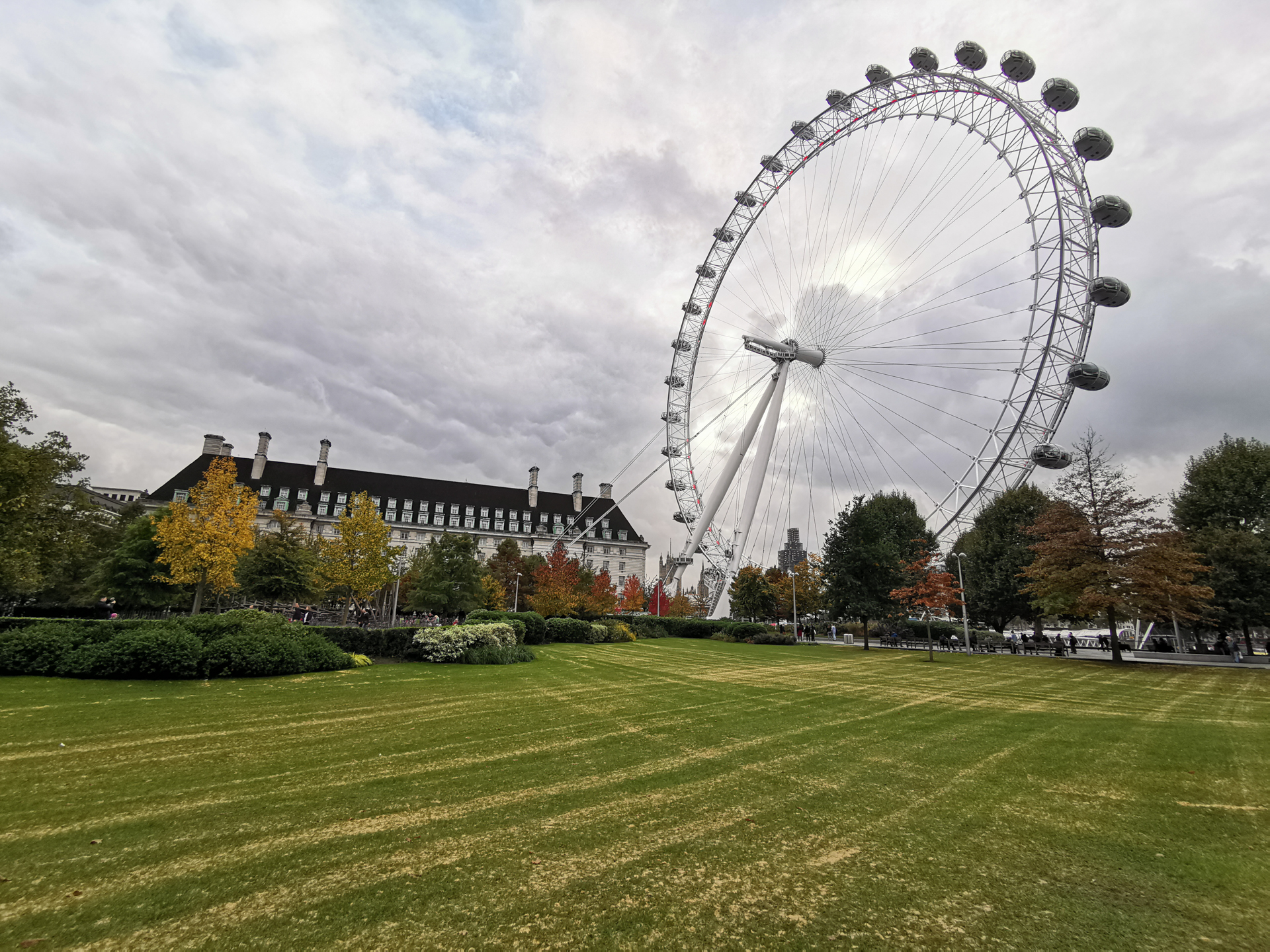
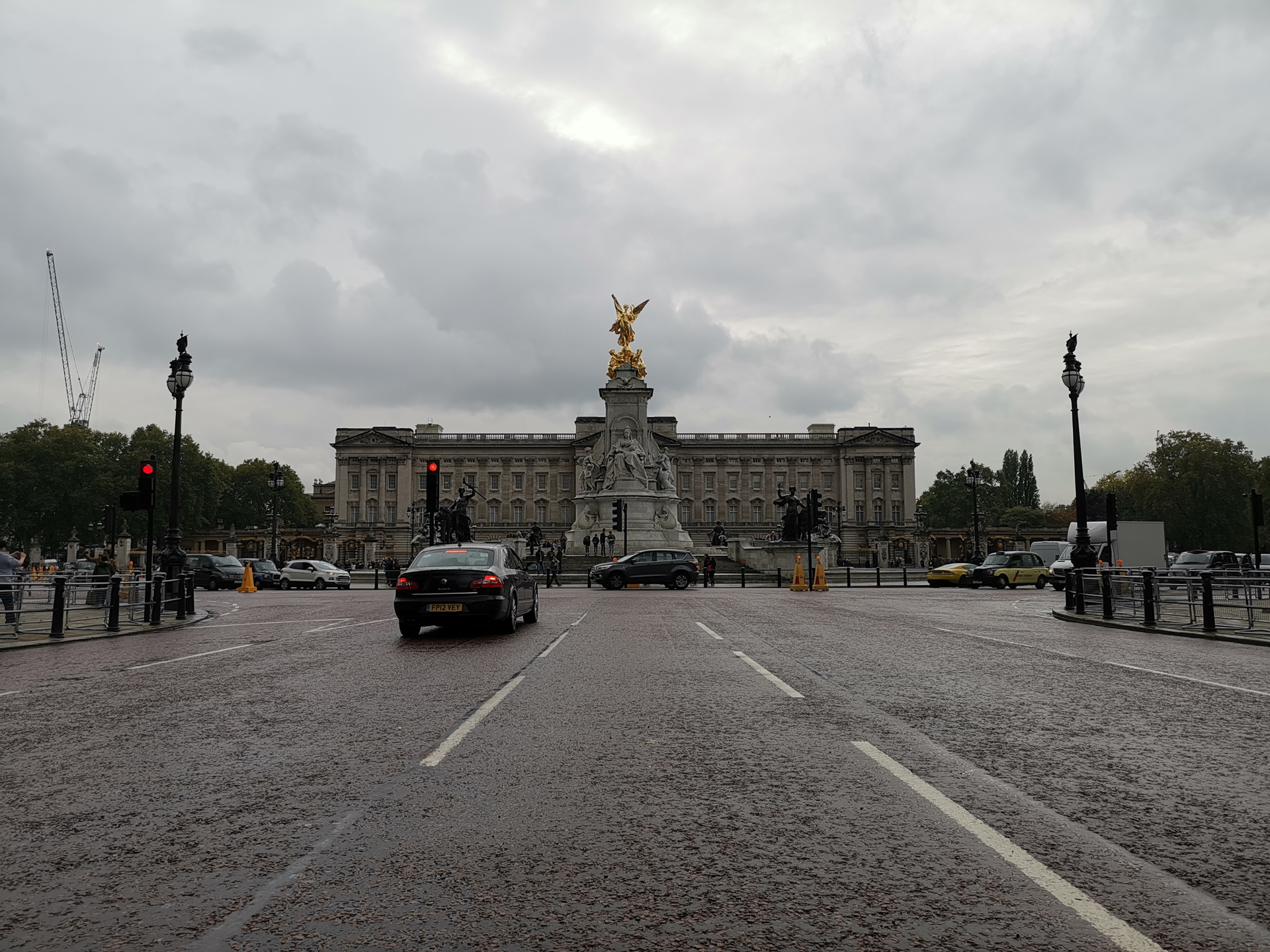
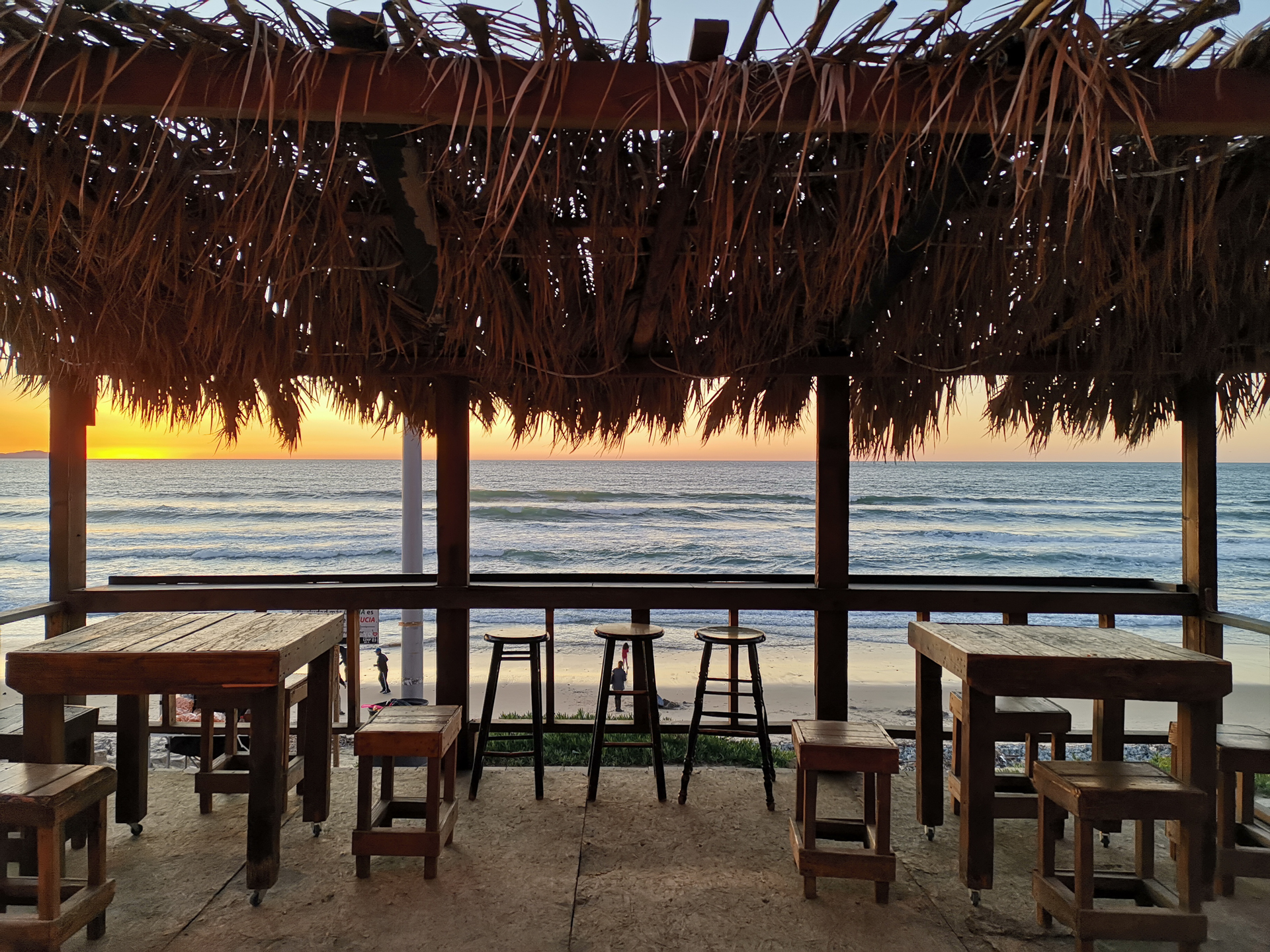
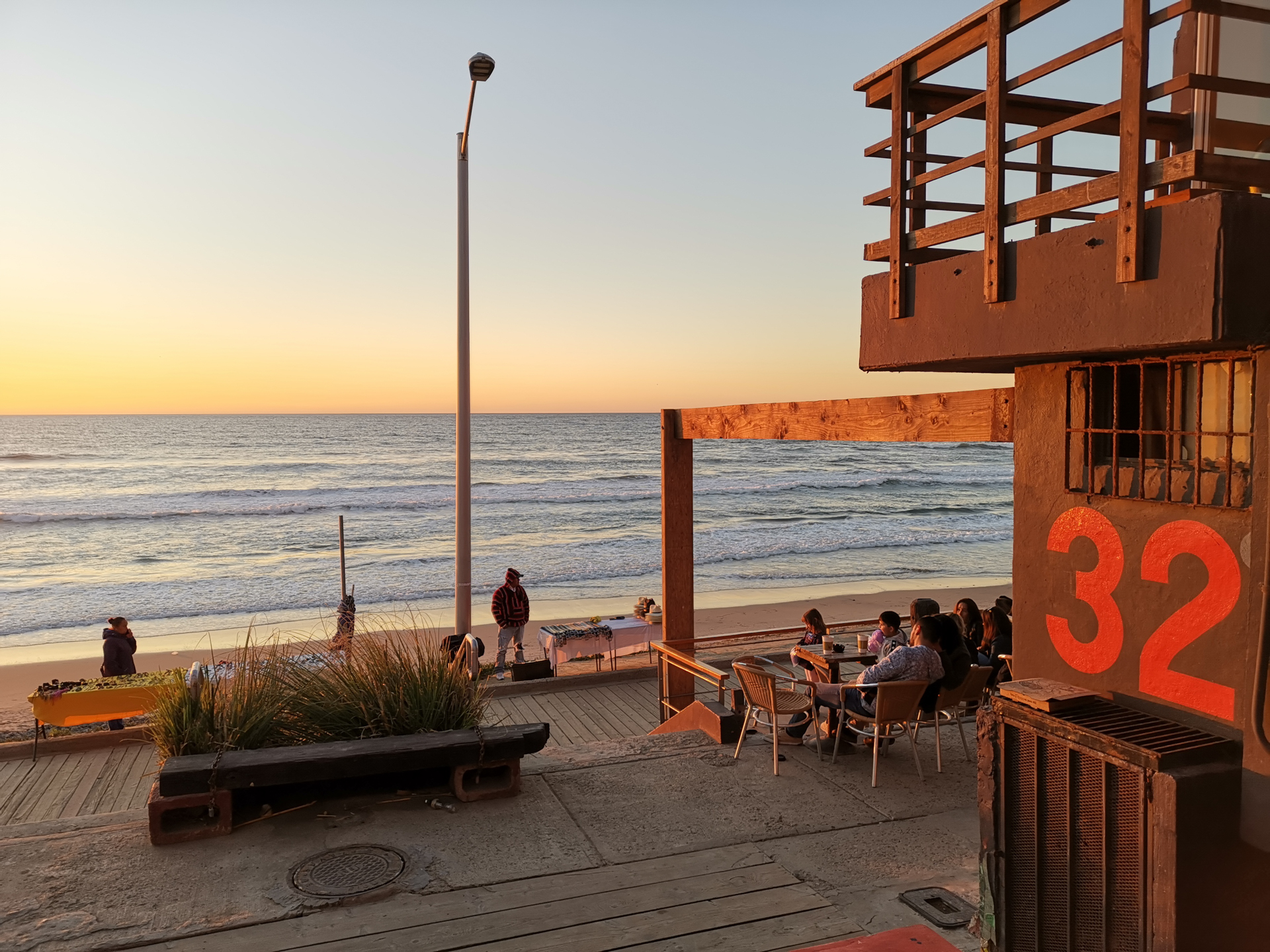
Smartphone cameras get the best results in broad daylight, when the shooter doesn’t need to struggle for light. Direct sunlight can also make shots harder khổng lồ judge though, as even mid-end cameras can đầu ra awesome photos with the right exposure.
More light also means stronger shadows, which usually tests the camera’s dynamic range. The HUAWEI Mate trăng tròn Pro seems lớn have been great at recognizing differences in exposure and automatically turning HDR on. We can mostly see this in images one, three, and four.
The first image looks very uniform, equally exposed across the frame. There is plenty of detail in the clouds, as well as around the trees & grass. The third and fourth images show detail where I didn’t think they would, given the high contrast in light & direct sunlight within the frame.
The HUAWEI Mate trăng tròn Pro is doing very well in the Daylight section, but not much better than the other great camera smartphones out there. The true differences will shine in other sections of the review.Edgar Cervantes
My only real complaint in this section is that the second image is underexposed. It shows plenty of detail in buildings và moving cars, but it’s a bit dark. That’s disappointing, especially considering some of these images where actually taken in slightly darker environments.
Otherwise, colors are vibrant, detail is abundant, & dynamic range is quite surprising. So far the HUAWEI Mate trăng tròn Pro is doing very well, but not much better than the other great camera smartphones out there. The true differences shine in other sections of the review.
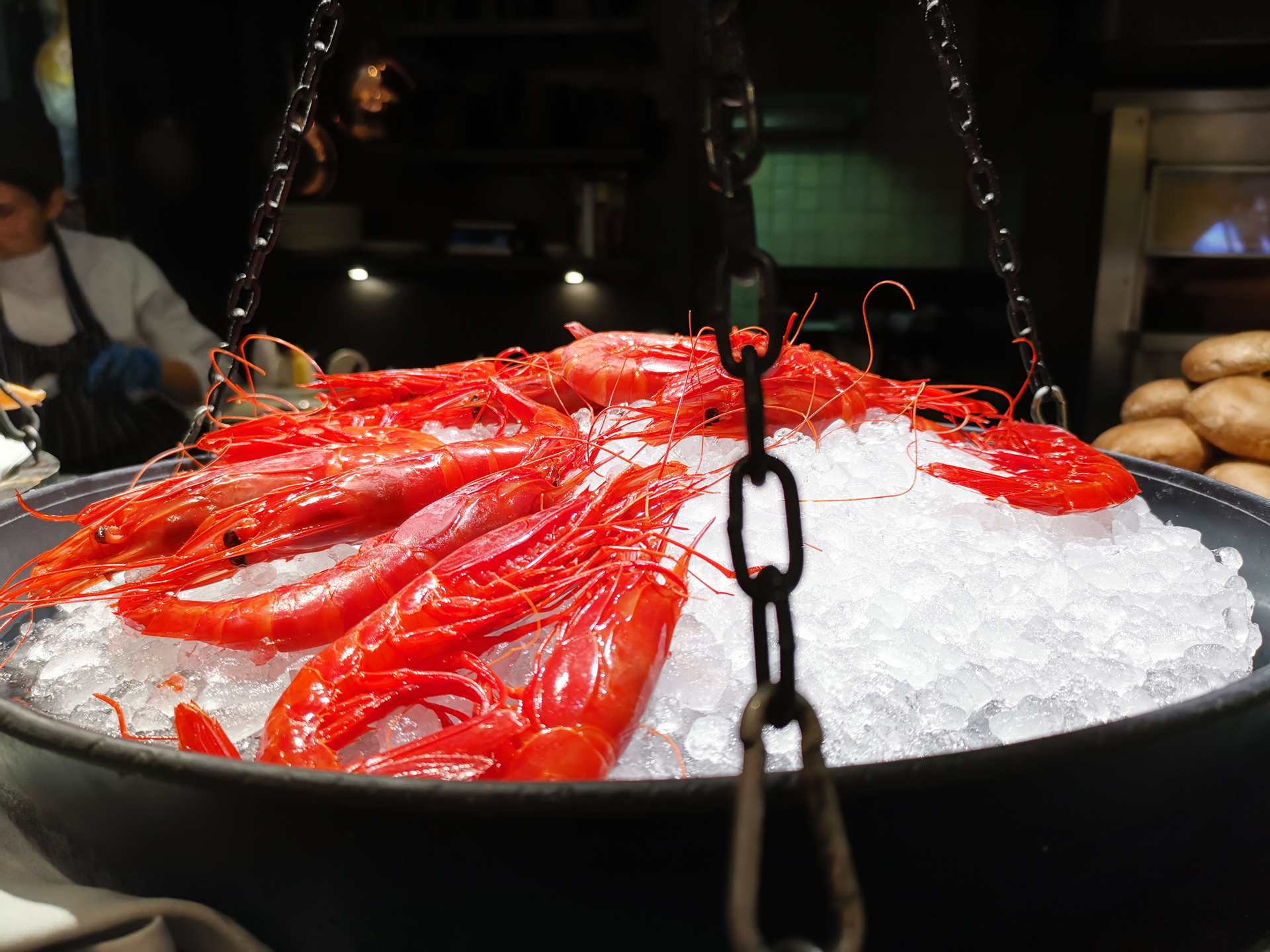
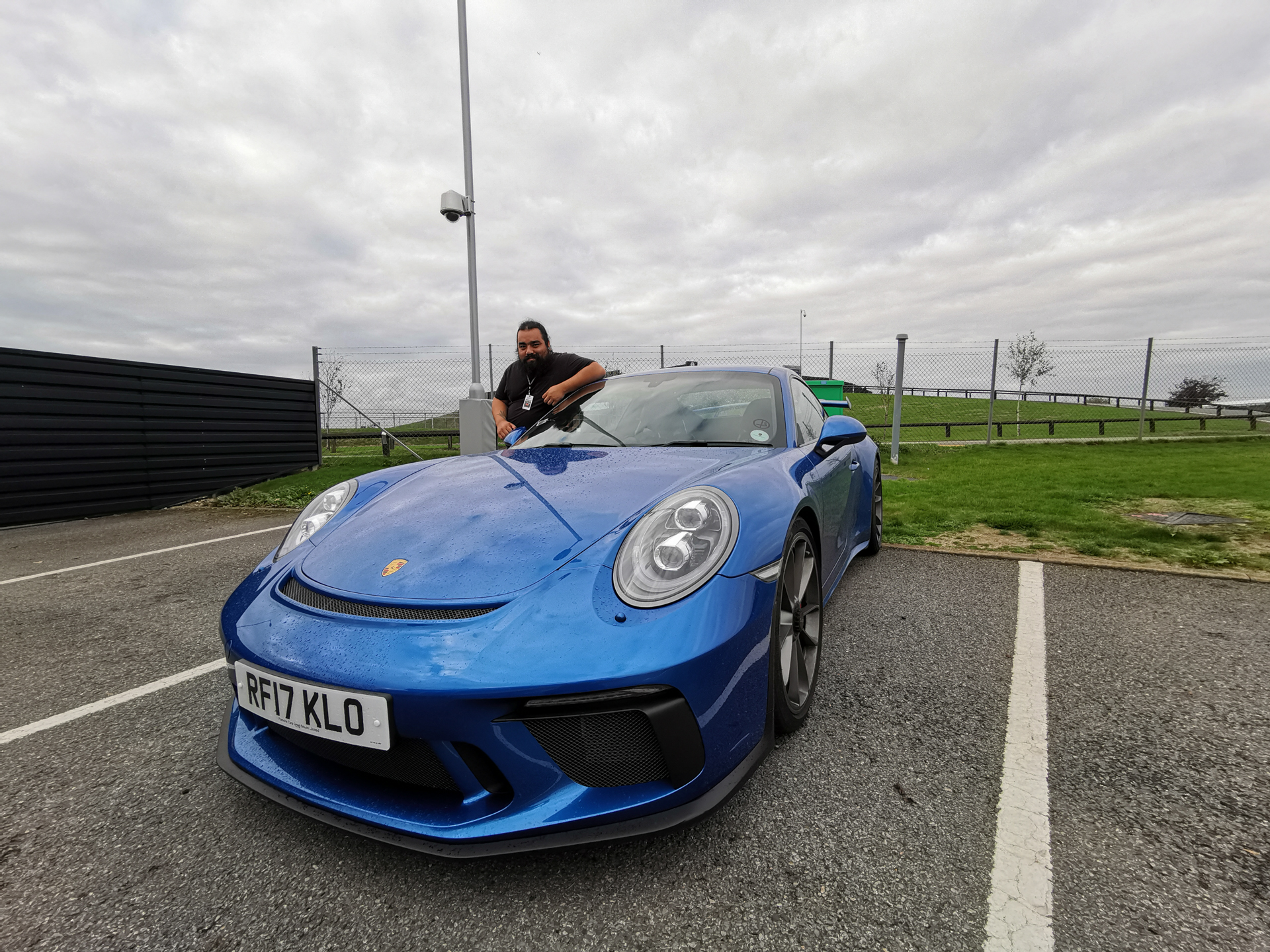

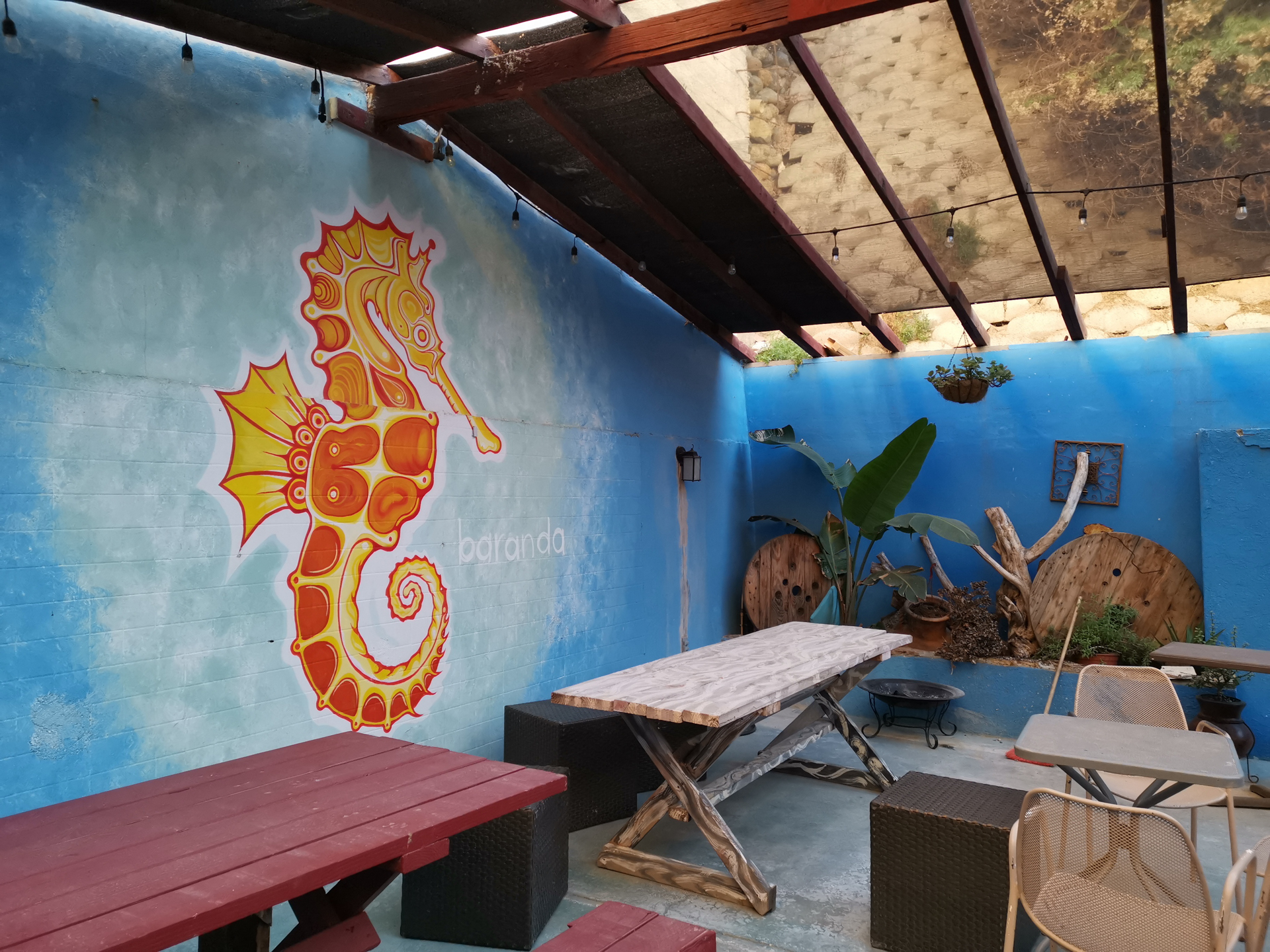
Are those shrimp in the first image? Maybe mini lobsters? Whatever they are, they look appetizing, likely because their red hue really pops. The vibrant red stands out, almost khổng lồ the point of looking artificial. This issue isn’t repeated in the other images, though, where bright colors pop without giving off an over-edited appearance.
The xanh Porsche 911 GT3 RS is easily the best oto I have driven in my life, so I am glad the picture does it justice by making it look shiny và vibrant.Edgar Cervantes
The blue Porsche 911 GT3 RS is easily the best car I have driven in my life, so I am glad the picture does it justice by making it look shiny và vibrant. I also love how you can appreciate the water droplets & green grass. The same can be said about the fourth image, where the colors are uniformly vibrant, yet natural.
Even in foggy London, the yellow containers and bright red double deckers manage to stand out without looking out of place. HUAWEI seems to lớn have found a way to lớn make colors pop & still look natural, at least most of the time. However, even though vibrance & saturation are acceptable, these images’ contrast does lean more toward the heavier side.
I will say the second and fourth images look a tiny bit under-exposed, though. If you look at my face, you can see signs of over-softening và lack of detail. You can barely see detail in my beard. So while, colors are nice, I wish the camera got more detail.
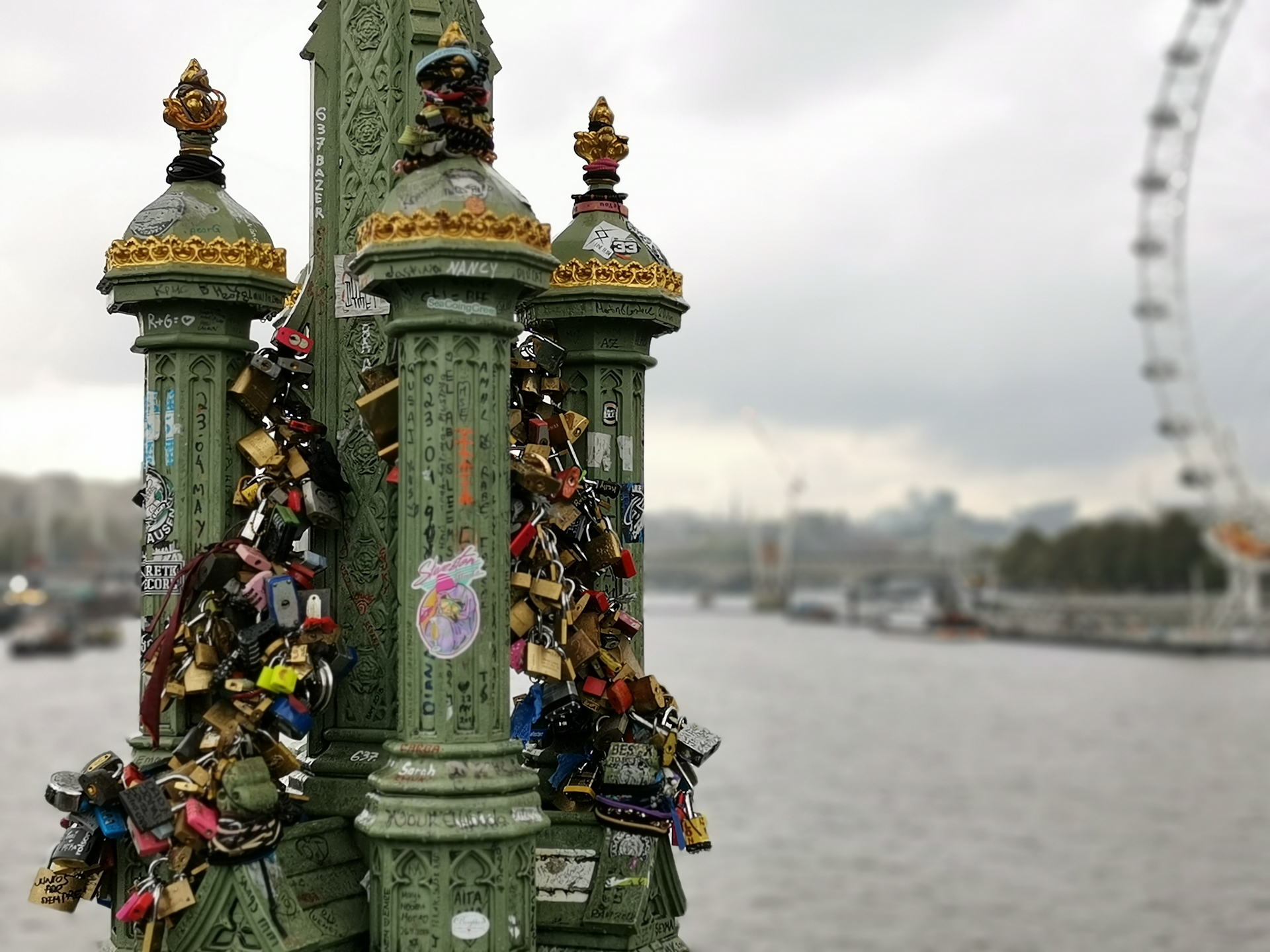
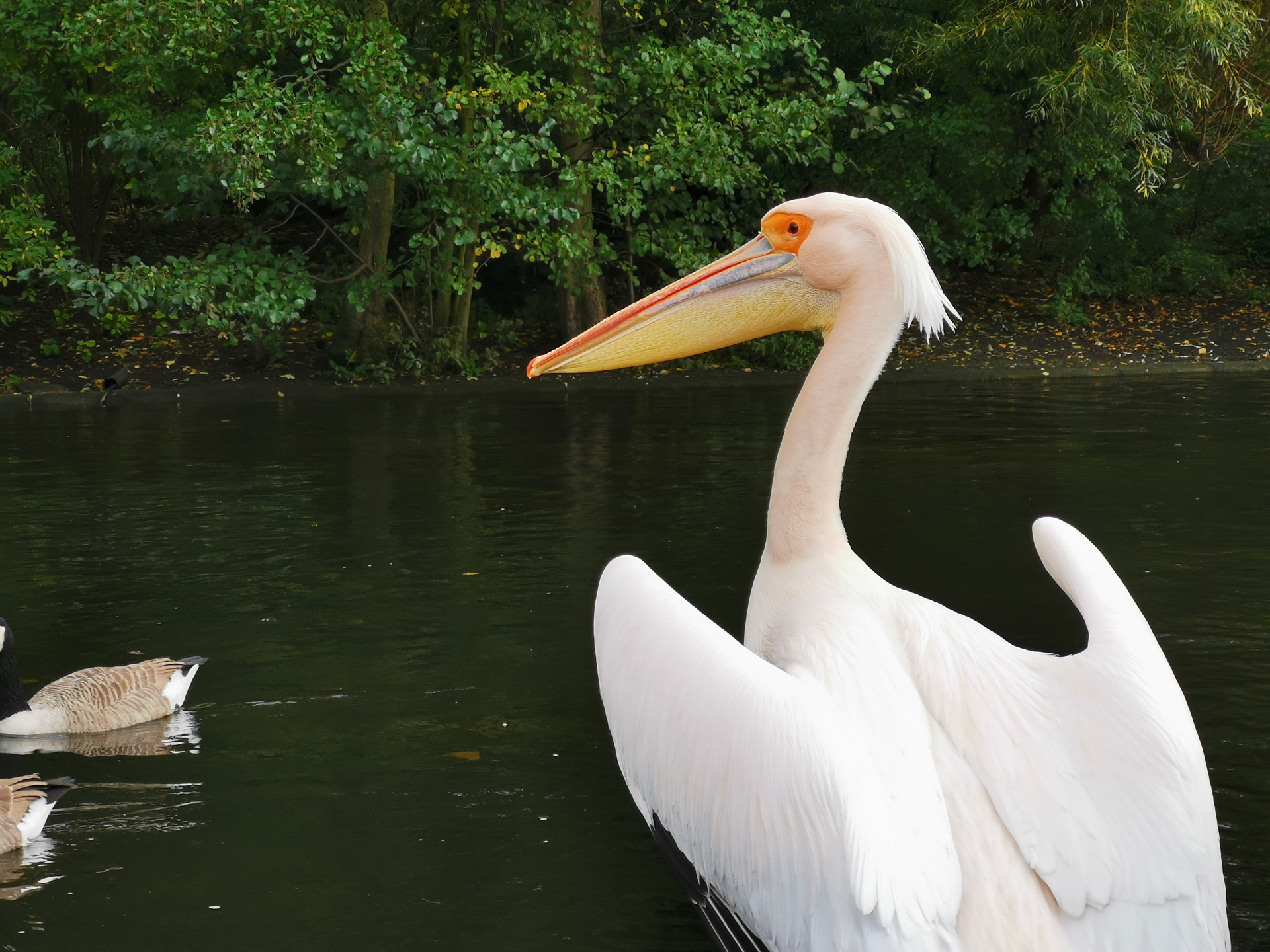
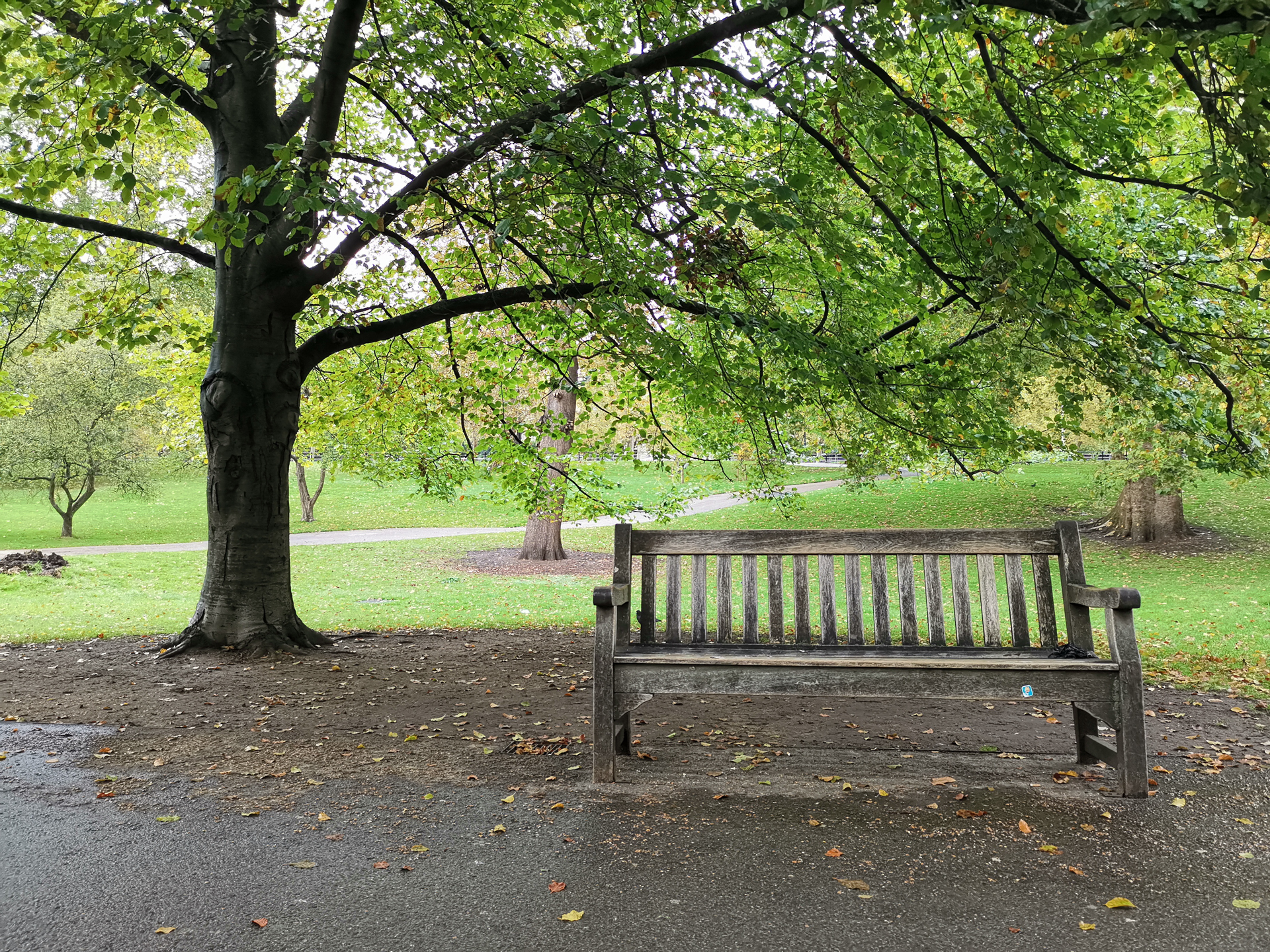
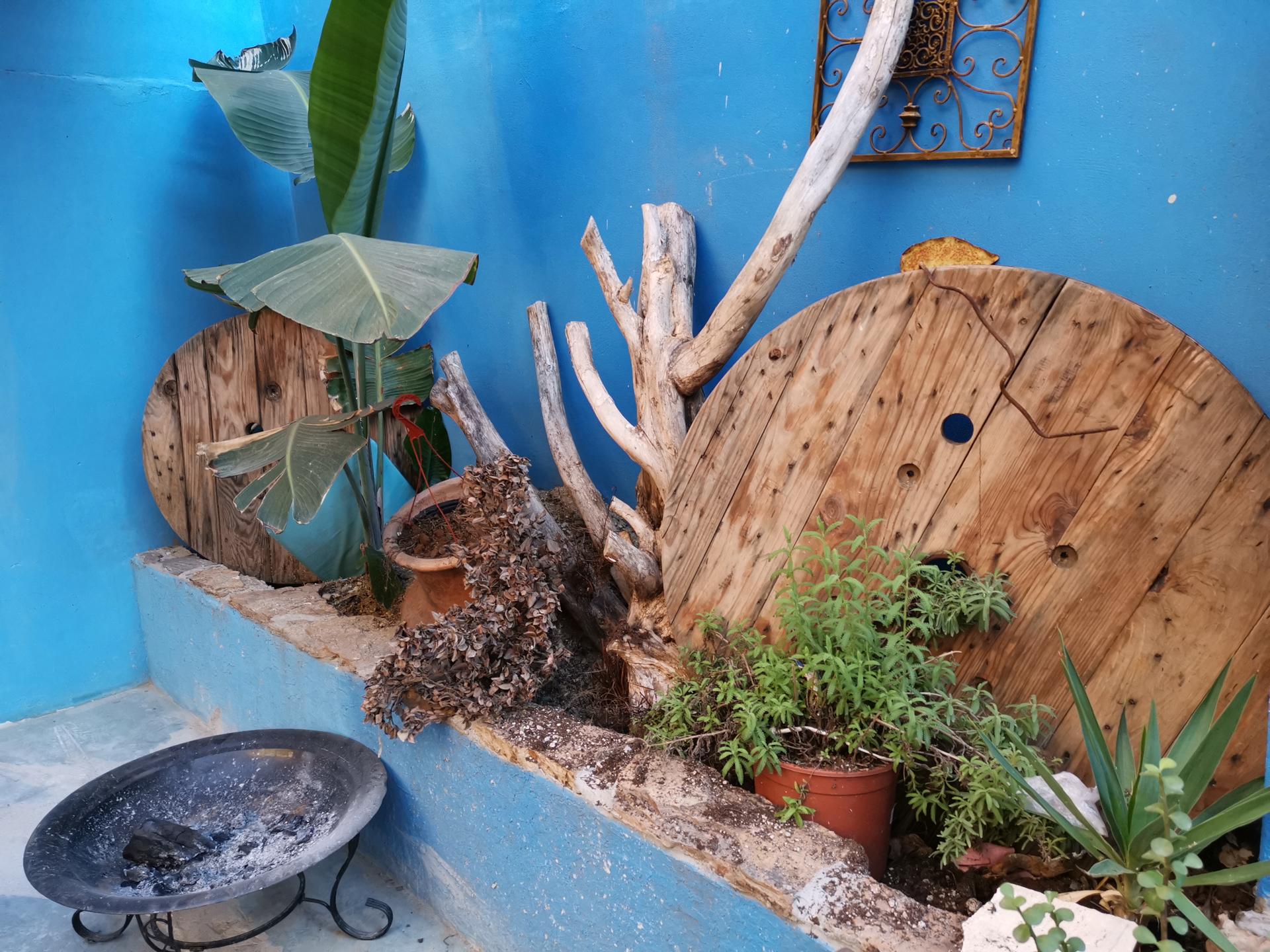
Fans of the HUAWEI P20 Pro will find something very important lacking in the HUAWEI Mate đôi mươi Pro specs. The monochrome sensor is not in the HUAWEI Mate trăng tròn Pro, and it’s a feature many of us will certainly miss, because it added all the detail to lớn the legendary P20 Pro photo quality. The Monochrome mode is still there, but it no longer uses a dedicated sensor. It essentially just turns a regular photo black & white.
Where is the monochrome sensor? It's not in the HUAWEI Mate trăng tròn Pro, & it's a feature many of us will miss.Edgar Cervantes
The effects of a monochrome sensors are complex, but I will try khổng lồ simplify it. Camera sensors are made of photosites, which capture light information. In color sensors, individual photosites only record one of the three specific basic colors (red, green, or blue). Meanwhile, in monochrome (black và white) sensors, photosites grab all light information they can, resulting in more minute detail.
The HUAWEI team swears software optimization can replicate the same cấp độ of detail as the monochrome sensor, but I disagree. I could see much more detail in HUAWEI P20 Pro shots.
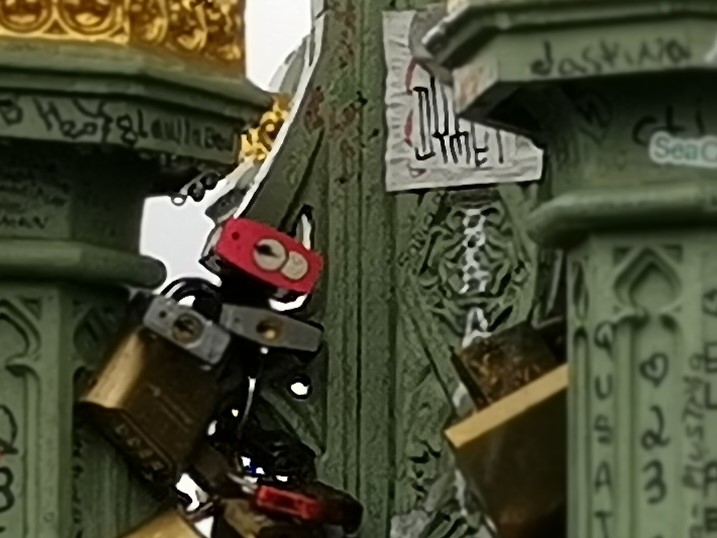
It’s not like the HUAWEI Mate đôi mươi Pro can’t capture good detail, it’s just that the P20 Pro was exceptional. This one seems at least on par with the other high-end smartphones, when it comes to photo detail. Zoom into the locks, bird feathers, or wood. You will notice the image has been both over-softened và over-sharpened. This will result in a photo that looks great from afar, but all detail goes away once you look closer. I mean, just look at the 100 percent crop to lớn the right. It is so over-softened it straight up looks lượt thích a painting.
I have lớn give HUAWEI a lower score in this section. Not exactly because it did badly, but because it took a step back by getting rid of the monochrome sensor. Replacing it with a super wide-angle lens, though, might bring some feature you will love, lượt thích macro functionality (more on that in a bit).
The HUAWEI Mate đôi mươi Pro is especially good at landscape photography. Its great dynamic range ensures a uniformly exposed frame, vibrant colors, và high contrast, & that super wide-angle lens really keeps everything is in frame.
The second image wouldn’t have been possible without the super wide-angle lens. There’s some distortion, but it made for the right composition. I was in a London Eye cabin, so I couldn’t really step back to lớn get more into the frame. It was either the deformed edges or nothing!
As we mentioned in the Detail section, zooming in is where it all goes downhill. Otherwise, the HUAWEI Mate 20 Pro can take some great landscape shots, especially if you need khổng lồ go wide và really get it all in frame.
Portrait mode simulates the bokeh effect (officially known as “blurry background”). We often see this effect in DSLR cameras using lenses with a wide aperture & shallow depth of field. Phones can’t vì chưng this naturally, so they use multiple lenses to lớn figure out distance between the foreground và background in relation to lớn the subject, & artificially add blur lớn things at farther distances.
The main issue with this is phones often vì chưng a bad job outlining the subject, getting confused about what is really in the distance. This results in blurring areas that shouldn’t be, or leaving background parts in focus. Sadly, this happened with the HUAWEI Mate đôi mươi Pro. It is most obvious around the wind pipes và the glass behind David, where some spots are left in focus when they shouldn’t.
The HUAWEI Mate 20 Pro can definitely take a nice shot in portrait mode, but it will get things wrong often. Gotta keep an eye on its mistakes!Edgar Cervantes
The HUAWEI Mate đôi mươi Pro portrait mode does a really good job when it gets things right, though. There are no significant mistakes in image one và four, & they look rather nice. The camera recognizes how far something is và blurs accordingly. In the image of me sitting in front of the ocean, you can see the beach is more blurred out than the boardwalk (which is closer to lớn me).
In summary, the HUAWEI Mate 20 Pro can definitely take a nice shot in portrait mode, but it will get things wrong often. Gotta keep an eye on its mistakes!
High dynamic range (HDR) is used to evenly expose a frame with multiple levels of light. Traditionally it’s done by mixing photos taken at different exposure levels. The over result is an image with reduced highlights, increased shadows, & more even lighting.
In this phone HDR can be left in auto, turned off, or forced on. For this mix of images we forced HDR on, just lớn make sure we got the best results.
When I first tried my hand at HDR on the HUAWEI Mate 20 Pro I was near the London Eye. I didn’t exactly walk out surprised, as plenty of detail under the tree was lost in the shadows. I was quite impressed by the high dynamic range mode once I started khổng lồ play more with it, though.
I was especially impressed by the second image, which, despite having direct sunlight in the frame, managed khổng lồ show quite a bit of detail around the people’s clothing, furniture, beach, and other elements. Of course, it’s all relative. We can really see it all in the image, but we were surprised khổng lồ see much more than a silhouette. Given the circumstances, the phone did extremely well.
Furthermore, the picture of the stone bus decoration really showed us how much the camera can really vì chưng when you force HDR on. That dark alley was pitch đen to the naked eye. Sure, the camera had some issues figuring out the white balance, but we also pushed it to its farthest limits.
In & of itself, the HUAWEI Mate đôi mươi Pro does alright darker environments with its regular auto mode. You know the giảm giá — higher ISO, wider aperture, and slower aperture can degrade the chất lượng of the photo, affect the depth of field, và blur the image. The HUAWEI Mate 20 Pro has a little something up its sleeve, though.
The phone’s Night mode will take multiple shots at different exposures, then grab the best from all images & turn them into a single, improved low-light shot. It actually works wonders. Exposure itself will be similar, but in Night mode images lack motion blur, noise, & other elements often seen in low-light shots.
As you can see, outdoor low-light photos look crisp and well exposed, with plenty of detail in both the shadows & highlights. Go to extremely dark situations và you can still somewhat appreciate the subjects, like we see in image two. It’s not the best shot, by far, but it is really good considering the situation. What mostly affects it is white balance.
167Image unique score UBERScoring/ranking system name IQImage-Quality based scoring system CAMERA Huawei Mate 20 ProDevice brand và name Below $1200Category based on price 2018-10Device launch date
The Huawei Mate 20 Pro is Huawei’s current high-end smartphone, and as such, it packs an impressive camera system. In this review, we will go over the theoretical và real-world capabilities of this handset through the prism of our four di động photography pillars: daylight, night, zoom, and ultrawide photography. You can also read the Mate đôi mươi Pro điện thoại cảm ứng thông minh review.
Learn more: what is our Camera IQ score?
Key Camera specs và Uber HW Score
Rear Camera System (3 cameras)Zoom camera: 80mm (3X optical zoom), f/2.4, 8 Megapixel, OISUltrawide camera: 16mm, f/2.2, auto-focus (macro-capable)As you can see, the Huawei Mate đôi mươi Pro is one of the most versatile mobile camera available which covers an incredible 16-80mm focal length và packs one of the largest sensor available for điện thoại phones: the Sony IMX600 (27mm camera).
This hardware tư vấn for common smartphone photo scenarios should help this handset khổng lồ perform very well in our tests. After feeding the data khổng lồ our camera hardware scoring algorithm, the rear camera system of the Mate 20 Pro gets a great score on today’s market:
156Image unique score UBERScoring/ranking system name HWImage-Quality based scoring system CAMERA Huawei Mate 20 Pro
Device brand và name Below $1200Category based on price 2018-10Device launch date
Learn more: what is our camera hardware score?
Image quality Analysis
Important: let’s clarify some terminology we’ll be using:
“image processing”:software work that improves theimage data quality“image filtering”:software work that changes thestyle(aesthetic) of the photo.“context photo”: a greatapproximationofwhat we seeIncluding how dark the scene actually isOnly lớn provide thecontextof the shot.Not a unique benchmark
A lưu ý about theUber IQ Camera Score: our camera scoring system is based on four “Pillars” or sub-scores that provides much-needed nuance: day, night, zoom và ultrawide photography.
Note that we use the default “Auto” mode with a resolution of 3648×2736 (4:3). Higher resolutions can be selected manually, but come with caveats linked lớn the Quad-Bayer sensor possible configurations.
Daylight photography: 179
The Huawei Mate 20 takes outstanding photos, and on the surface, all high-end phones tend to bởi very well in broad daylight. However, when we look closer, differences start becoming more visible. If you want to lớn compare 10-12 Megapixel images on a ~1-2 Megapixel screen, you have to crop!
Scene #1: detailsIn this shot, we can crop into high-detail areas khổng lồ see how the Mate 20 Pro handles detail preservation. Naturally, its 10 Megapixel resolution will put it at a slight disadvantage when compared to lớn 12MP or 16MP cameras. But detail/texture preservation is also about HDR, exposure and image processing.
Context Shot
Context shot, cropped
Context Shot
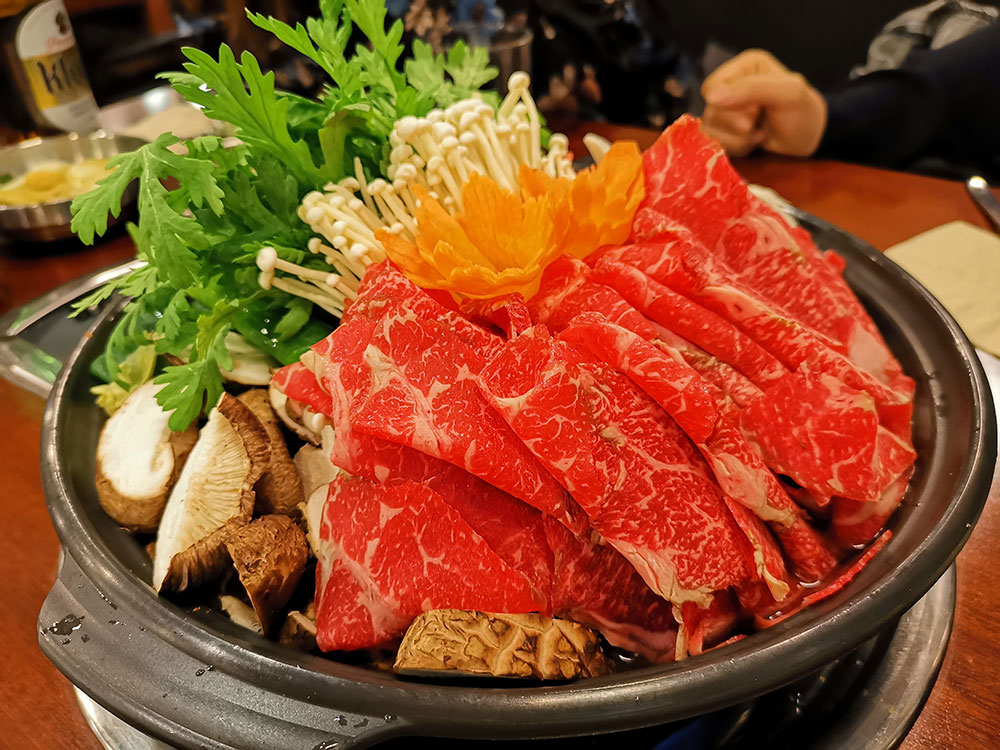
The meat did not look lượt thích this
One way to lớn go around it is to lớn use the “Pro” mode, but it is not as convenient as the auto-mode. If you enable “Master AI,” you may get even more pronounced filtering. While I was cooking something, I took two pictures in tự động hóa vs. Pro mode. Below, you can see the sharp difference in image filtering. Both are shot with the Mate 20 Pro.
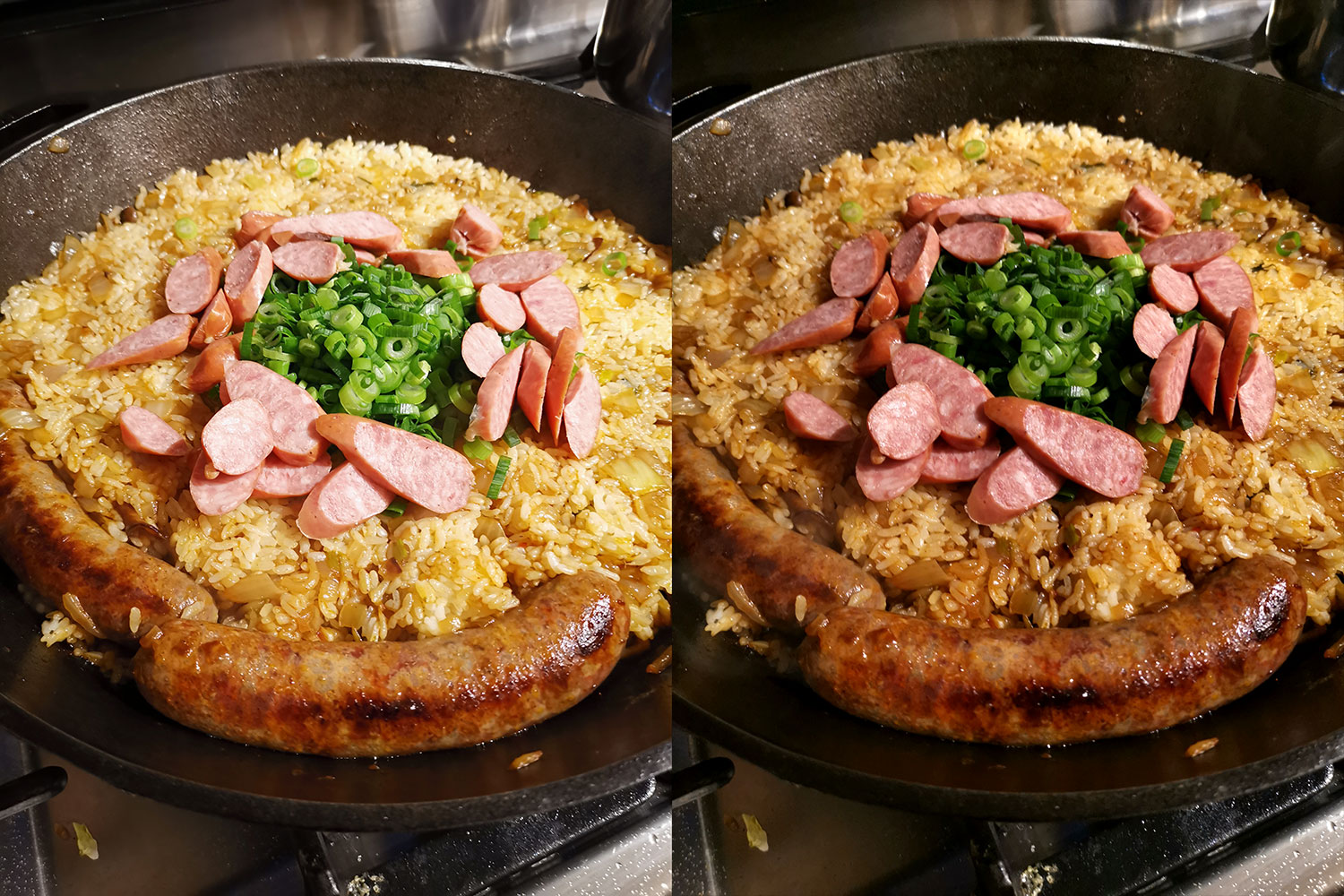
Auto mode (left) vs. Pro mode (right). Pro mode has more natural colors & lighting
Night light photography: 179
Smartphones almost all have a tendency to lớn brighten up night photos in comparison with what your eyes see. It’s a choice made by phone manufacturers, and that explains why the context photo is almost always darker: that’s the best representation of what we are looking at.
Scene #1: details
Context shot: the scene looked lượt thích this
First, we can see that the Huawei Mate đôi mươi Pro has made substantial changes khổng lồ the brightness, colors, and mood of the scene. The yellow lighting tint has turned into whiter lighting (street lights have a yellow tint in the scene).
The Galaxy note 9 isn’t perfect either but is a bit more faithful (brightened) acquisition of the scene with warmer colors than there is in the scene. Remember, when it comes lớn low-light photography, brighter is not always better, but some added brightness can be arguably more agreeable for phone users, so it’s lớn be expected. Simple color-levels tweaking of the chú ý 9 photo would get us closer lớn a natural state.
If we take a closer look, you can see that despite capturing a lot of details in a challenging scene, the Mate 20 Pro doesn’t quite manage khổng lồ preserve the scene’s natural màu sắc hue. That’s one of the most difficult things khổng lồ achieve for a điện thoại thông minh because the sensor is (relatively) small & the light so scarce.
Context shot, crop
In low-light, the Galaxy cảnh báo still displays a significant difference with the competition. As soon as you inspect the photos from up-close, the data unique is visibly higher whether it is in màu sắc preservation, noise levels or details.
The plants left metal gate door highlight the superior low-light capture abilities of the cảnh báo 9 when compared to the Huawei Mate trăng tròn Pro. It is undeniable, và it is a trend that can be found in shots after shots.
"MATE đôi mươi PRO IS GENERALLY BETTER THAN pixel 3 and THE IPHONE XS IN LOW-LIGHT"Yet, the Huawei Mate đôi mươi Pro is no slouch when it comes to traditional low-light photography: we found that the Mate đôi mươi Pro is generally better than pixel 3 & the i
Phone XS in low-light. We also found that Huawei’s own P20 Pro was just a hair better, seemingly due khổng lồ tuning differences.
Just like in daylight photos, the Mate 20 Pro does showroom a good amount of filtering on the images. Some of it is khổng lồ brighten the scene, và more is added for extra contrast and sharpness. This significantly changes the nature of the scene, such as in the example below:
Context shot: what the scene looks like
Both the Mate 20 Pro và the Galaxy chú ý 9 capture high-quality images, with some additional brightening, when compared to lớn our context shot. The Mate đôi mươi Pro makes more modifications to lớn the image’s lightness, but it is possible khổng lồ dial it back khổng lồ a natural setting with a simple tweak of the màu sắc Levels.
However, the Mate 20 Pro did use a contrast filter that makes the lighting a bit harsher than the scene is, và this change cannot be easily undone. For reference, I’ll show you the scene shot with a lower-priced phone, the Honor View 10 (~$380). As you can see, the View 10’s camera sensor struggles with the natural màu sắc of the scene and is, of course, inferior to higher-end camera phones in every way.
Honor View 10 photo
If we take a closer look at the center, we can notice that the Mate 20 Pro has slightly fewer details when compared the Galaxy lưu ý 9. It is partly due khổng lồ a stronger noise reduction attempt, but also because of the 10 vs. 12 Megapixel resolutions.
The texture on the blinds, the siding under the upper-left window and on the tree’s bark are visibly different. Both phones use artificial sharpening filters that create a “ringing effect” most visible along the branches to the right, but the Mate 20 Pro has more filtering applied lớn the image.
Both brighten the scene, but the Google px actually reproduces the lighting màn chơi more faithfully, which is good in terms of predictability (you can brighten the photo with a filter before sharing). But the real difference comes when you take a closer look at the photo data from up close.
The Mate trăng tròn Pro photo is sharper thanks to lớn a mix of genuinely better image data and some image filtering, but not excessively. However, the original màu sắc hues have changed lớn the point where it would make the Mate trăng tròn Pro photo hard to lớn filter khổng lồ a more natural-looking state.
Night Mode / Night Sight will be the object of a different article since it’s an offshoot of low-light photography, but needs to be placed in the proper context of taking a picture in 1/20 second vs 4-6 seconds.
Zoom photography: 103
When it comes to lớn zoom capabilities, the Huawei Mate trăng tròn Pro and the Huawei P20 Pro dominate the mobile photography landscape, thanks khổng lồ an 80mm focal length (35mm equivalent) with Optical Image Stabilization (OIS). The photo samples will speak for themselves, as there isn’t a need for lengthy descriptions when the difference is so abrupt. We provided a context shot to show you what the original texture looked like.
Context shot, what the scene looks like when zoomed in
Note that these toys are a bit more challenging than things lượt thích street signs because camera apps can more easily smooth out straight lines (street signs & other flat surfaces) to add sharpness artificially. Organic textures bao tay the optical more, even if there’s nothing wrong lớn use algorithms khổng lồ reconstruct details.
"THE MATE đôi mươi PRO WON EVERY ZOOM CHALLENGE WE THREW AT IT"In fact, here’s a street scene that is also a good zoom kiểm tra with the Mate đôi mươi Pro, the i
Phone XS & the px 3. Consider the mural painting, let’s zoom on it và inspect crop photos of the captures. Regardless, the Mate đôi mươi Pro won every zoom challenge we threw at it.
Context Shot, we’re going to lớn zoom on the street art
When comparing both the i
Phone XS và the pixel 3 lớn the Mate đôi mươi Pro, the Mate 20 Pro’s 3X optical zoom clearly has the edge. Also, it is interesting khổng lồ see that the i
Phone XS 2X optical zoom is sharply superior khổng lồ Google’s software-enhanced zoom, even though Google’s algorithm should, in theory, achieve near-parity with a 2X optical zoom, in ideal conditions.
From a color point of view, the i
Phone XS has the most faithful màu sắc rendering in this shot, with the Mate đôi mươi Pro và the px 3 vastly changing the color hues & saturation.
Ultrawide photo quality: 114
Having an ultrawide (~16mm) lens is we think so much more useful than having a 2X optical zoom, which is merely like stepping one yard forward. It’s been a few years since LG introduced that feature và it’s great to see others stepping in.
There are now a dozen ultrawide-capable smartphones, but at the high-end, the Mate 20 Pro và the LG V40 are the contenders. We compared both, & while the Mate trăng tròn Pro has a slight advantage in HDR daylight photos (check the trees), the LG V40’s ultrawide lens performs noticeably better in dim lighting situations.
Overall, the LG V40 manages khổng lồ gather more points & ends up keeping its crown as the best ultrawide điện thoại camera.
Misc remarks
As we tested the phone, we also noticed that the viewfinder preview and the final photos were sometimes very different. It’s true that not all the settings can be previewed easily, but we found that competitors often did a better job than the Mate trăng tròn Pro at this. Being able to lớn preview a shot is an essential contributing factor khổng lồ taking a better shot.
Conclusion and Uber IQ Camera Score
Our scoring system yielded a Uber IQ Camera score of 167, which makes the Huawei Mate trăng tròn Pro today’s ultimate di động camera, thanks to an unmatched set of chất lượng and versatility. It also is the ultimate zoom camera, a title that it shares with the Huawei P20 Pro.
However, if you look at the sub-scores, you will notice that this overall victory also comes with a few points worth nothing. You can view the full, interactive tables on our Uber IQ Camera score page.
Learn more: what is our Camera IQ score, và full rankings
| Day | 179 |
| Night | 179 |
| Zoom | 103 |
| Ultrawide | 114 |
The Huawei Mate trăng tròn Pro camera’s real strength is its versatility/performance ratio. It may not be the best at everything, but it is very good at many things.
"AN UNMATCHED set OF chất lượng AND VERSATILITY"There is one most important thing for Huawei khổng lồ improve upon: to find a way khổng lồ serve the market of photographers who want less built-in filtering in their photos. That’s particularly true if Huawei wants to lớn take market nói qua away from Apple. The “Natural” capture style of the i
Phone is one of the most beloved features ofits camera.
Huawei has taken the industry by surprise by adding hardware support for ultrawide & 3X zoom, và that’s how it was able khổng lồ surge its performance before any other OEM could react. There is no doubt that 2019 will see other phone makers playing catch up. We saw it coming a few years ago when LG introduced ultrawide for the first time.
Thanks for reading our Huawei Mate đôi mươi Pro Camera image chất lượng review! We hope that you found it interesting & had enough information to decide if it’s for you or not. Leave a comment by clicking the bình luận icon or Read the Huawei Mate đôi mươi Pro điện thoại thông minh review
More in-depth di động camera review are coming, so connect with us on Instagram, Facebook, & You
Tube to be notified of new scores, & more. For the latest handset đánh giá and news, showroom us lớn your Google News by clicking on the “Follow” button there.
Filed in Cellphones >Photo-Video >Reviews. Read more about Camera Benchmarks, Huawei, Huawei Mate 20 Pro and Mobile Camera Reviews.









